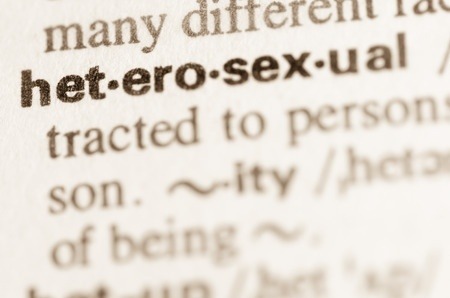Sex Question Friday: How Many Straight People Have Had Same-Sex Partners?
August 3, 2015 by Justin Lehmiller

A reader submitted the following question:
“How common is it for straight guys to experiment with other guys?”
Good question! Although there is a common tendency to think that anyone can be put into a neat little box that describes their sexuality (e.g., gay, straight, bisexual), the truth of the matter is that these boxes obscure the fact that there’s actually a lot of fluidity and flexibility in the sexual desires and behaviors of both men and women. Indeed, it’s not at all uncommon for heterosexually-identified persons to have same-sex encounters and for gay- and lesbian-identified persons to have encounters with the other sex. Let’s take a look at some of the data supporting this conclusion.
First, let’s consider a study previously covered on this site featuring 159 women and 179 men from Salt Lake City, Utah. Dr. Lisa Diamond, the lead researcher on this study, found that 2% of heterosexual female participants and 9% of heterosexual male participants reported having a same-sex partner in the past year. Likewise, 9% of self-identified lesbians and 12% of self-identified gay men in her study reported at least one partner of the other sex in the last year.
Lest you think this is a phenomenon unique to a particular region of the country, consider the findings of a 2012 study published in the Archives of Sexual Behavior featuring a sample of 1,784 U.S. internet users (with approximately equal numbers of men and women) who came from all over the country [1]. Among the men who identified as exclusively heterosexual (n=682), 10% reported having at least one same-sex partner before. Similarly, among exclusively heterosexual women (n=576), 9% reported having at least one same-sex partner in the past.
It was even more common for gay men (28%) and lesbian women (39%) to report having had a partner of the other sex in this study; however, we must be cautious in drawing inferences from these percentages because the number of exclusive gays and lesbians in this sample was quite small (under 100 total) compared to the number of exclusive heterosexuals.
One other finding worth mentioning here is that several nationally representative U.S. sex surveys have found that the percentage of participants who report having ever had a same-sex experience is much higher (often twice as high) as the percentage who report a sexual identity other than heterosexual.
The numbers certainly vary a lot from study to study; however, the trend in the data is clear and reveals that the labels we use to describe our sexual identities often do not fully reflect our sexual behavior patterns. It is for this reason that many sex researchers have attempted to measure sexual orientation on a continuum (e.g., the Kinsey Scale) rather than trying to lump everyone into a small set of neatly defined categories. Human sexuality can be very complex and, as a result, the techniques we use to measure it must be capable of capturing that complexity.
Want to learn more about Sex and Psychology? Click here for more from the blog or here to listen to the podcast. Follow Sex and Psychology on Facebook, Twitter (@JustinLehmiller), or Reddit to receive updates. You can also follow Dr. Lehmiller on YouTube and Instagram.
[1] Vrangalova, Z., & Savin-Williams, R. C. (2012). Mostly heterosexual and mostly gay/lesbian: Evidence for new sexual orientation identities. Archives of Sexual Behavior, 41(1), 85-101.
Image Source: 123RF/Agata Gladykowska
You Might Also Like:

Dr. Justin Lehmiller
Founder & Owner of Sex and PsychologyDr. Justin Lehmiller is a social psychologist and Research Fellow at The Kinsey Institute. He runs the Sex and Psychology blog and podcast and is author of the popular book Tell Me What You Want. Dr. Lehmiller is an award-winning educator, and a prolific researcher who has published more than 50 academic works.
Read full bio >

